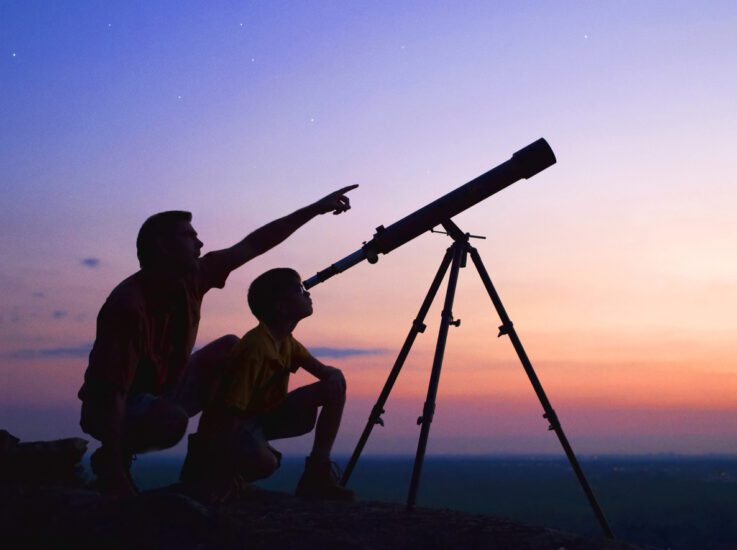International Astronomy Day is coming up on April 29th! Check out these mind-blowing facts about our universe that your kids will love.
The Moon likely came from Earth. Scientists believe that an early Earth was struck by another object 4.5 billion years ago, taking a “chunk” out of it that eventually formed what we now know as “The Moon.” Research has confirmed that the Moon is made from the same material as the early Earth’s crust, making it likely that an explosive event known as the “Giant Impact Hypothesis” led to its creation!
There is a supermassive black hole at the center of our galaxy. Scientists have long theorized that a black hole sits at the heart of the Milky Way galaxy, but only recently obtained concrete proof. Roughly 27,000 light-years away, a supermassive black hole called Sagittarius A* has now been photographed by scientists!
The Earth is really, really tiny. When compared to other planets, the Earth is quite small. More than 1,300 Earths could fit inside Jupiter, our solar system’s largest planet! The sun is even bigger, and it would take over one million Earths to fill it up!
The Sun is really, really tiny. That’s right! In the scope of the universe, there’s nearly always a bigger planet or star. NASA classifies the Sun as an average star in terms of size, and stars that are several times larger have already been discovered. Sirius, the brightest star that can be seen from Earth, is double the Sun’s size!
The largest known star is called UY Scuti. This star, classified as a red hypergiant, sits close to the center of the Milky Way Galaxy – roughly 9,500 light years away from Earth! UY Scuti has a radius around 1,700 times larger than the Sun. This means you could fit nearly 5 billion of our Suns into UY Scuti! For us humans, it is nearly impossible to visualize just how small we are in the scope of the universe.
Time travel is possible, but not the way most people would like. In most science fiction movies, time travel usually focuses on moving backwards – something that is unfortunately impossible for humans! However, we know that time, space, and gravity are all related thanks to Einstein’s theory of relativity. To put it simply: the faster you go, the more things appear to slow down around you! We already know this is possible – the International Space Station travels at 17,500 miles per hour, and spending enough time there will cause your time to move at a different rate than Earth’s time!
We still don’t really know what’s out there. For all the planets, stars, galaxies, and celestial bodies humans have discovered, scientists estimate we’ve only mapped out around 5% of the known universe. To say there’s a lot more to explore would be an understatement!




